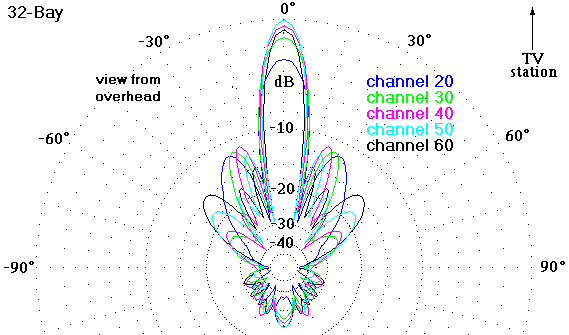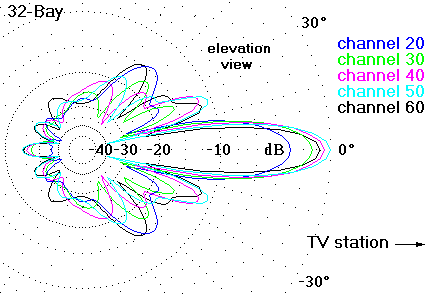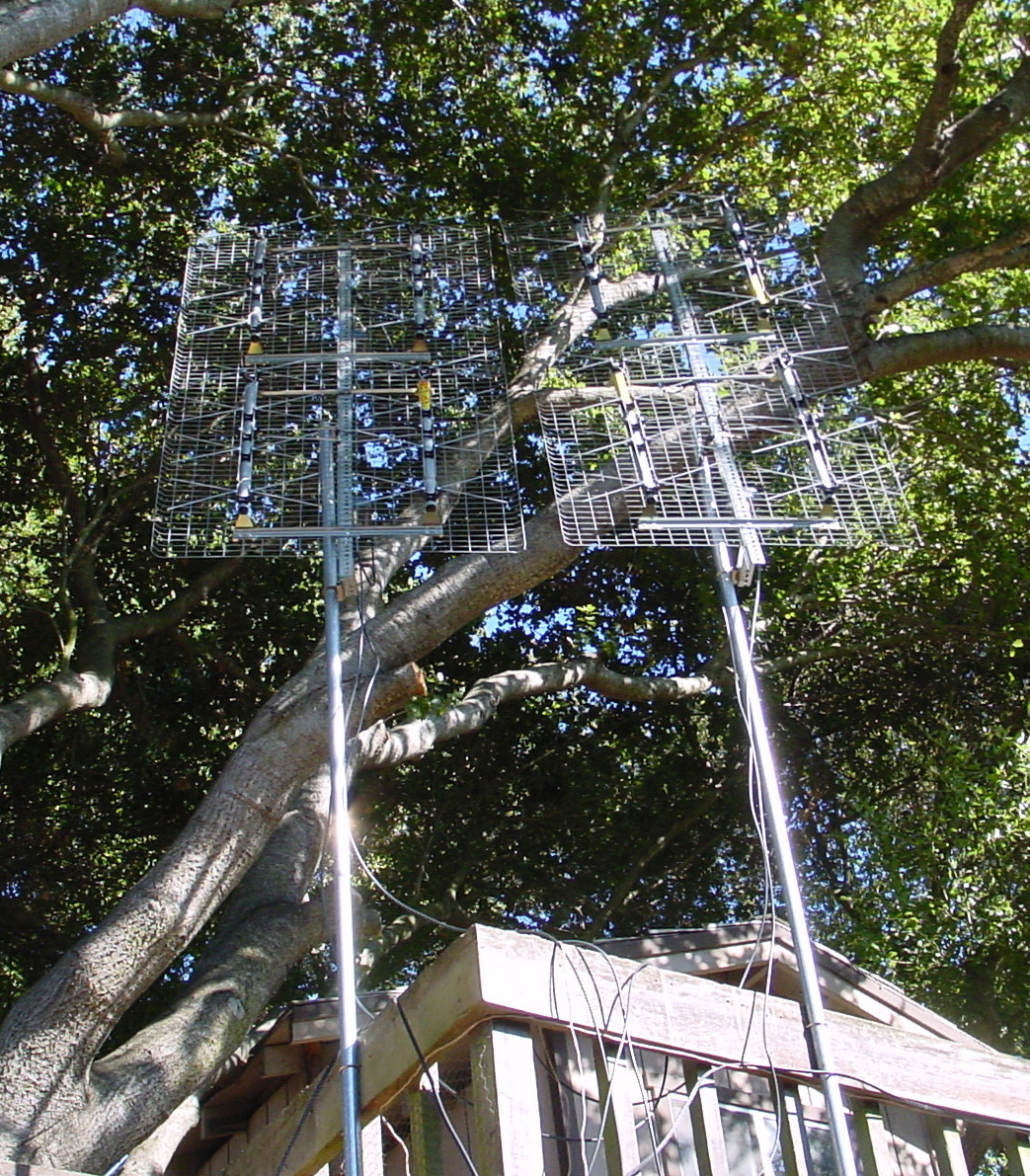8/15/08
A 32-Bay UHF Antenna
The section “A
16-Bay UHF Antenna” is required reading before this section. All of the principles described there apply
here.


Version 2 with 2
masts:

The author’s
antenna was constructed with a common 4-way splitter as the combiner. The first version of the antenna had a shared
amplifier. The second version had four
Channel Master 7777 amplifiers that could be powered individually from the
author’s living room. This made it clear
how much each unit was contributing to the signal strength.
In a
neighborhood with hot and cold spots, it is generally not possible to find a
spot that is hot for all stations. The
author constructed this antenna in the hopes that its gain would overcome the
disadvantage of not being in a hot spot.
In that respect the antenna was a complete failure. Neither the signal strength nor the
signal/noise ratio showed much improvement over a single 4228. The author eventually determined that the
antenna was working properly, and would have been a great antenna in most
neighborhoods. But when the field
strength varies over the face of the antenna, the antenna will scatter
(retransmit) most of the improvement that ganging promises.
Weighty concerns
At 8 lb., the
4228 is a heavy antenna. The total
weight of the four antennas, mast, mounting irons, etc. will exceed 50 lb., a
weight that is magnified by being at the end of a pole. Putting it on a sloped-roof building probably
requires a crane. Most likely, severe
weather will eventually destroy whatever it is attached to. Repairing a brick chimney is expensive. For roof mounting, it is probably wiser to
gang four lightweight Yagi/Corner-Reflectors such as the AntennasDirect.com
XG91. You would be giving up the low
channels, but you would be more likely to live to enjoy the others.
Summary
Channel
Master used to make the 4251, a reflector antenna with a 7-foot parabolic
dish. The last one was manufactured in
2000. That is probably the only antenna
that will rival the 32-Bay.
The author
eventually broke up the 32-bay into two one-over-the-other 16-bays. Both outperformed an 8-bay, and spots were
found for them where all the local channels could be received.
This page is part of “An HDTV Primer”, which
starts at www.hdtvprimer.com